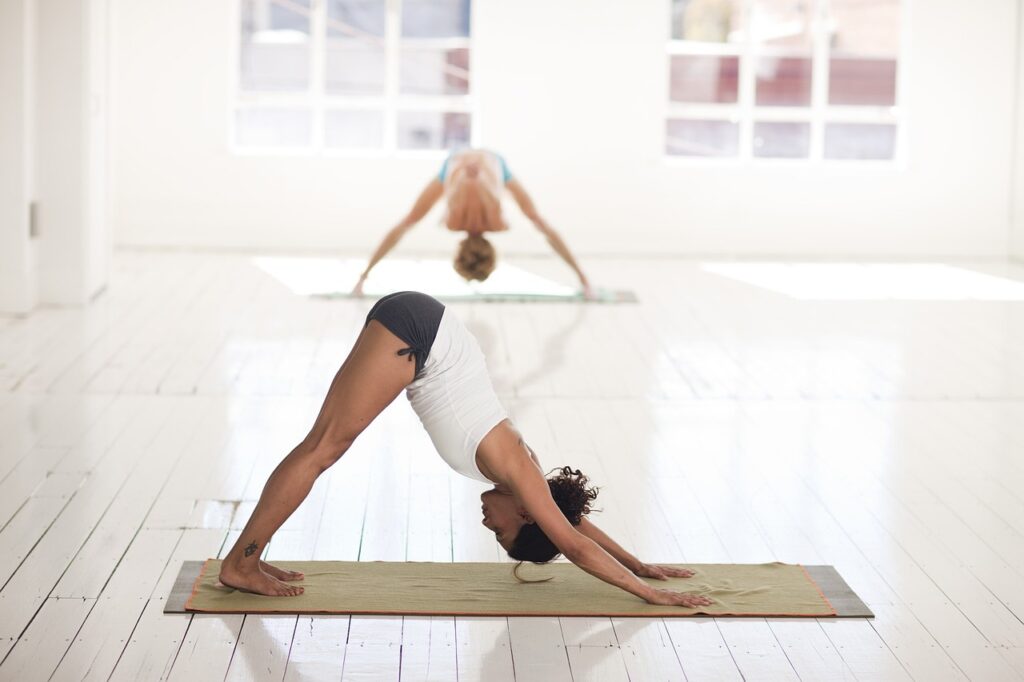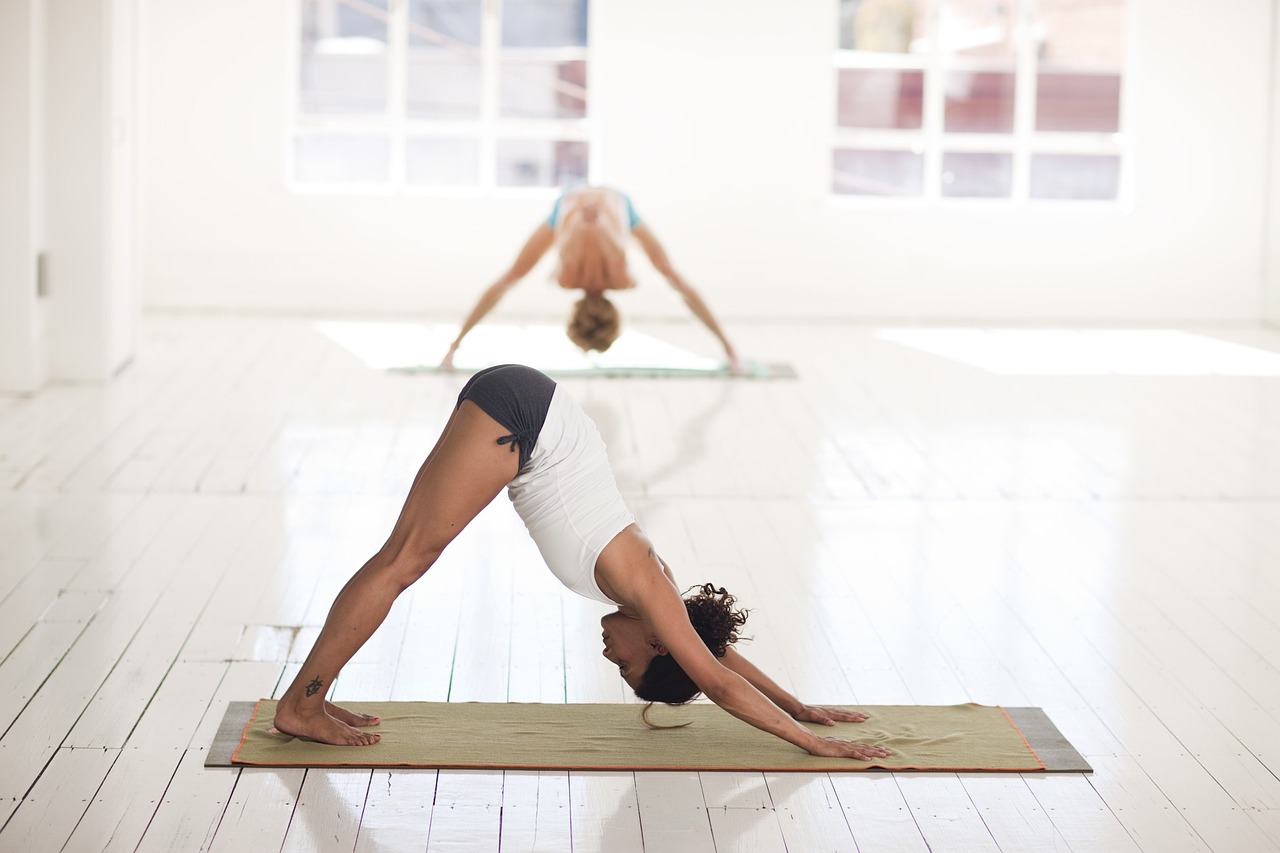Do you ever find yourself wondering how long you should be holding a particular yoga pose for maximum benefit? Whether you are a seasoned yogi or just starting out, this question can often arise during your practice. Finding the right balance between stretching and challenging your body is key, and knowing the optimal duration for holding each pose can make a significant difference in reaping its full benefits. In this article, we will explore the factors to consider when determining the ideal length of time to hold a yoga pose, helping you enhance your practice and achieve maximum benefit.

Factors Affecting the Duration of Holding Yoga Poses
Level of Experience
Your level of experience in practicing yoga can greatly influence the duration for which you should hold yoga poses. If you are a beginner, it is advisable to start with shorter durations and gradually increase the time as you become more comfortable and confident in your practice. Holding poses for too long in the beginning may lead to muscle fatigue or strain.
Type of Yoga Pose
Different yoga poses require varying amounts of time to be held in order to derive maximum benefits. Some poses, such as balancing poses or deep stretches, may require longer durations to establish stability and improve flexibility. On the other hand, dynamic poses or poses involving intense exertion may require shorter holds.
Physical Condition
Your physical condition plays a crucial role in determining the duration for which you should hold yoga poses. If you have any pre-existing injuries or medical conditions, it is important to consult with a healthcare professional or a qualified yoga instructor to determine suitable holding times. Additionally, factors such as your strength, flexibility, and overall fitness level should be taken into consideration when deciding on the duration.
Yoga Style or Tradition
Different styles or traditions of yoga may have varying recommendations for the duration of holding poses. Some traditions emphasize holding poses for a shorter duration with a focus on flowing sequences, while others prioritize longer holds for increased strength and flexibility. It’s important to understand the specific principles of the style or tradition you are practicing in order to align your holding times accordingly.
Benefits of Holding Yoga Poses for an Extended Period
Improved Strength and Flexibility
Holding yoga poses for an extended period can lead to improved strength and flexibility. This is because longer holds allow for a deeper release of tension in the muscles, leading to increased elasticity. As you hold a pose, your body gradually adapts and becomes stronger, enabling you to go deeper into the pose over time.
Increased Focus and Concentration
When you hold a yoga pose for a longer duration, it requires focused attention and concentration. This helps to cultivate mindfulness and enhances your ability to stay present in the moment. Holding poses for longer periods can serve as a form of meditation, improving your mental clarity and promoting a deeper mind-body connection.
Enhanced Body Awareness
By holding yoga poses for an extended period, you can develop a heightened awareness of your body and its alignment. This increased body awareness allows you to make subtle adjustments to your posture, ensuring that you maintain proper form and alignment throughout the pose. As you continue to hold poses for longer durations, your body becomes more attuned to its inner sensations and you can fine-tune your practice accordingly.
Deeper Relaxation and Stress Relief
Holding yoga poses for a longer time can facilitate deep relaxation and provide stress relief. When you hold a pose, your body has the opportunity to release tension and let go of any accumulated stress. Additionally, longer holds allow your mind to settle and your nervous system to relax, promoting a sense of calm and tranquility.
Potential Risks of Holding Yoga Poses for Too Long
Muscle Strain or Injury
One of the potential risks of holding yoga poses for too long is the risk of muscle strain or injury. When you hold a pose beyond your body’s capacity, it can lead to overstretching or overworking the muscles, which may result in strains or tears. It is important to listen to your body and avoid pushing yourself beyond your limits to prevent such injuries.
Joint or Ligament Damage
Overholding poses can also put excessive strain on the joints and ligaments, potentially leading to damage or instability. It is crucial to maintain proper alignment and avoid holding poses for longer than your body can comfortably handle to protect your joints and ligaments from unnecessary stress. If you have any existing joint issues, it is recommended to consult with a healthcare professional or a qualified yoga instructor for guidance.
Increased Fatigue and Exhaustion
Holding yoga poses for extended periods requires strength and endurance. If you hold poses for too long without adequate rest or recovery, it can lead to increased fatigue and exhaustion. It’s important to find a balance between challenging yourself and allowing your body enough time to rest and restore its energy.
Loss of Mindfulness and Presence
As you hold a yoga pose for an extended period, you may be tempted to let your mind wander or become distracted. This can lead to a loss of mindfulness and presence, detracting from the overall benefits of the practice. It is important to maintain a focused and present mindset throughout the pose, staying connected to your breath and body sensations.
Recommended Duration for Holding Common Yoga Poses
Mountain Pose (Tadasana)
Mountain pose is a foundational pose in yoga that helps to improve posture and promote a sense of grounding. It is often held for around 30 seconds to 1 minute, allowing you to establish proper alignment and cultivate stability.
Downward-Facing Dog (Adho Mukha Svanasana)
Downward-Facing Dog is a dynamic pose that stretches the entire body, while also building strength and stability. It is typically held for 1-3 minutes, with beginners starting with shorter holds and gradually increasing the duration as they become more comfortable.
Warrior II (Virabhadrasana II)
Warrior II is a strong and empowering pose that engages the legs, hips, and core muscles. It is commonly held for 30 seconds to 1 minute on each side, allowing you to build strength and endurance while maintaining proper alignment.
Tree Pose (Vrksasana)
Tree pose is a balancing pose that improves focus, stability, and leg strength. It is usually held for 30 seconds to 1 minute on each side, with the option to extend the duration for a greater challenge and deeper engagement of the muscles.
Child’s Pose (Balasana)
Child’s pose is a resting pose that provides deep relaxation and helps to release tension in the back and hips. It can be held for a few breaths to several minutes, depending on your comfort level and the need for rest or restoration.
Bridge Pose (Setu Bandha Sarvangasana)
Bridge pose is a backbend that strengthens the back, glutes, and legs. It is typically held for 30 seconds to 1 minute, with the option to use props such as blocks or a bolster to support the lower back.
Corpse Pose (Savasana)
Corpse pose is a relaxation pose that allows your body and mind to fully integrate the benefits of your yoga practice. It is typically held for 5-15 minutes, providing an opportunity for deep relaxation and rest.

Tips for Determining the Optimal Duration of Holding Yoga Poses
Listen to Your Body
The most important tip for determining the optimal duration of holding yoga poses is to listen to your body. Pay attention to any sensations or discomfort that arises and adjust accordingly. Your body will guide you in finding the balance between challenge and ease.
Pay Attention to Breath and Sensations
As you hold a yoga pose, pay attention to your breath and bodily sensations. If your breath becomes shallow or strained, it may be a sign that you have held the pose for too long. Similarly, if you experience any pain or discomfort, it’s important to modify or release the pose.
Explore Different Holding Times
Experiment with different holding times for each pose. Start with shorter durations and gradually increase the time as you become more comfortable and confident in your practice. This allows you to understand how your body responds to different lengths of holds and find the optimal duration for each pose.
Modify and Adapt as Needed
Don’t be afraid to modify or adapt the poses to suit your unique needs and abilities. Use props, like blocks or blankets, to provide support or make adjustments to your body alignment to ensure you maintain proper form. Remember, yoga is a personal practice and should be tailored to your individual requirements.
Guidelines for Maintaining Proper Alignment and Form During Yoga Poses
Engage Core Muscles
Engaging your core muscles is essential for maintaining stability and proper alignment in yoga poses. By activating your core, you create a strong foundation and protect your spine from strain or injury. Focus on drawing your navel towards your spine and lifting through the pelvic floor muscles to engage your core.
Keep Spine Neutral
Maintaining a neutral spine is crucial for avoiding undue strain on your back and ensuring proper alignment. Be mindful of the natural curves of your spine and avoid excessive arching or rounding. The length of your spine should be maintained throughout the pose, with the crown of your head reaching upward.
Align Joints and Limbs
Aligning the joints and limbs properly is key to preventing injury and getting the most out of your yoga practice. Ensure that your shoulders are relaxed and in line with your hips, your knees are aligned with your ankles, and your wrists are in line with your shoulders. Pay attention to the alignment cues provided by your teacher or use a mirror to check your alignment.
Avoid Excessive Strain or Pressure
Yoga poses should be challenging, but it’s important to avoid excessive strain or pressure on your joints and muscles. Find a balance between effort and ease, and never force your body into a pose. If a pose feels painful or uncomfortable, make modifications or seek guidance from a qualified instructor.

Breathing Techniques to Enhance the Benefits of Holding Yoga Poses
Deep Belly Breathing
Deep belly breathing, also known as diaphragmatic breathing, involves filling your lungs deeply by allowing your belly to expand with each inhale and contract with each exhale. This breathing technique promotes relaxation, activates the parasympathetic nervous system, and helps to release tension in the body.
Ujjayi Pranayama
Ujjayi pranayama, often referred to as victorious breath, involves breathing in and out through the nose while partially closing the back of the throat. This creates a gentle sound similar to ocean waves, which helps to focus the mind, regulate the breath, and deepen your overall yoga practice.
Alternate Nostril Breathing
Alternate nostril breathing, also known as Nadi Shodhana, involves alternating the flow of breath between the left and right nostrils. This technique helps to balance the energy channels in the body, promote mental clarity, and reduce stress and anxiety.
Victorious Breath (Ujjayi Kumbhaka)
Victorious breath, or Ujjayi Kumbhaka, is a breathing technique that involves holding the breath for a certain duration after an inhalation or exhalation. This technique helps to build lung capacity, increase internal heat, and cultivate focused concentration during your yoga practice.
How to Progress in Holding Yoga Poses for Longer Durations
Gradually Build Endurance
Progressing in holding yoga poses for longer durations requires patience and consistency. Start by increasing your holding time in small increments, such as adding 5-10 seconds each week. As your body adapts and becomes stronger, you can gradually increase the duration of your holds, always being mindful of your body’s limitations.
Use Props for Support
Using props such as blocks, straps, or bolsters can provide additional support and allow you to hold poses for longer durations. Props help to maintain proper alignment and take some of the intensity off your muscles, enabling you to hold poses with greater ease and stability.
Incorporate Mindfulness Techniques
Incorporating mindfulness techniques during your yoga practice can help you hold poses for longer durations and deepen your experience. Focus on your breath, maintain present-moment awareness, and cultivate a positive mindset. By staying fully engaged in the pose and connecting with your body, you can extend your holding time and enhance the benefits.
When to Seek Guidance from a Yoga Instructor or Therapist
Existing Injuries or Medical Conditions
If you have any existing injuries or medical conditions, it is important to consult with a healthcare professional or a qualified yoga instructor before attempting to hold poses for longer durations. They can provide personalized guidance and ensure that you practice safely and effectively.
Difficulty Maintaining Proper Alignment
If you struggle to maintain proper alignment or experience discomfort or pain while attempting to hold poses for longer durations, it is advisable to seek guidance from a yoga instructor. They can analyze your alignment and provide modifications or adjustments to help you practice with better form and prevent potential injuries.
Limited Range of Motion or Flexibility
If you have limited range of motion or flexibility, it may be challenging to hold poses for extended periods. In such cases, a qualified yoga instructor or therapist can help you adapt the poses to suit your unique needs and gradually work towards increasing your flexibility and range of motion.
Lack of Progress or Plateau
If you find that you have reached a plateau in your practice and are not progressing in holding poses for longer durations, consulting with a yoga instructor can be beneficial. They can provide individualized guidance, suggest variations or refinements, and offer insights to help you overcome any challenges and continue progressing.
Conclusion
The duration for which you hold yoga poses plays an important role in maximizing the benefits of your practice. Factors such as your level of experience, the type of pose, your physical condition, and the yoga style or tradition you follow all influence the ideal holding time. By holding poses for longer durations, you can improve strength and flexibility, increase focus and concentration, enhance body awareness, and experience deeper relaxation and stress relief. However, it is essential to be mindful of potential risks such as muscle strain, joint damage, fatigue, and loss of mindfulness. Listening to your body, paying attention to breath and sensations, exploring different holding times, and maintaining proper alignment and form are key to finding the optimal duration for your individual practice. Remember to incorporate breathing techniques, progress gradually, seek guidance when needed, and always prioritize your well-being and safety. With a balanced approach, you can make the most of your yoga practice and enjoy its transformative effects on both your body and mind.

